Projects at CBD
Current major projects within CBD
How does nature respond to changes in temperature?
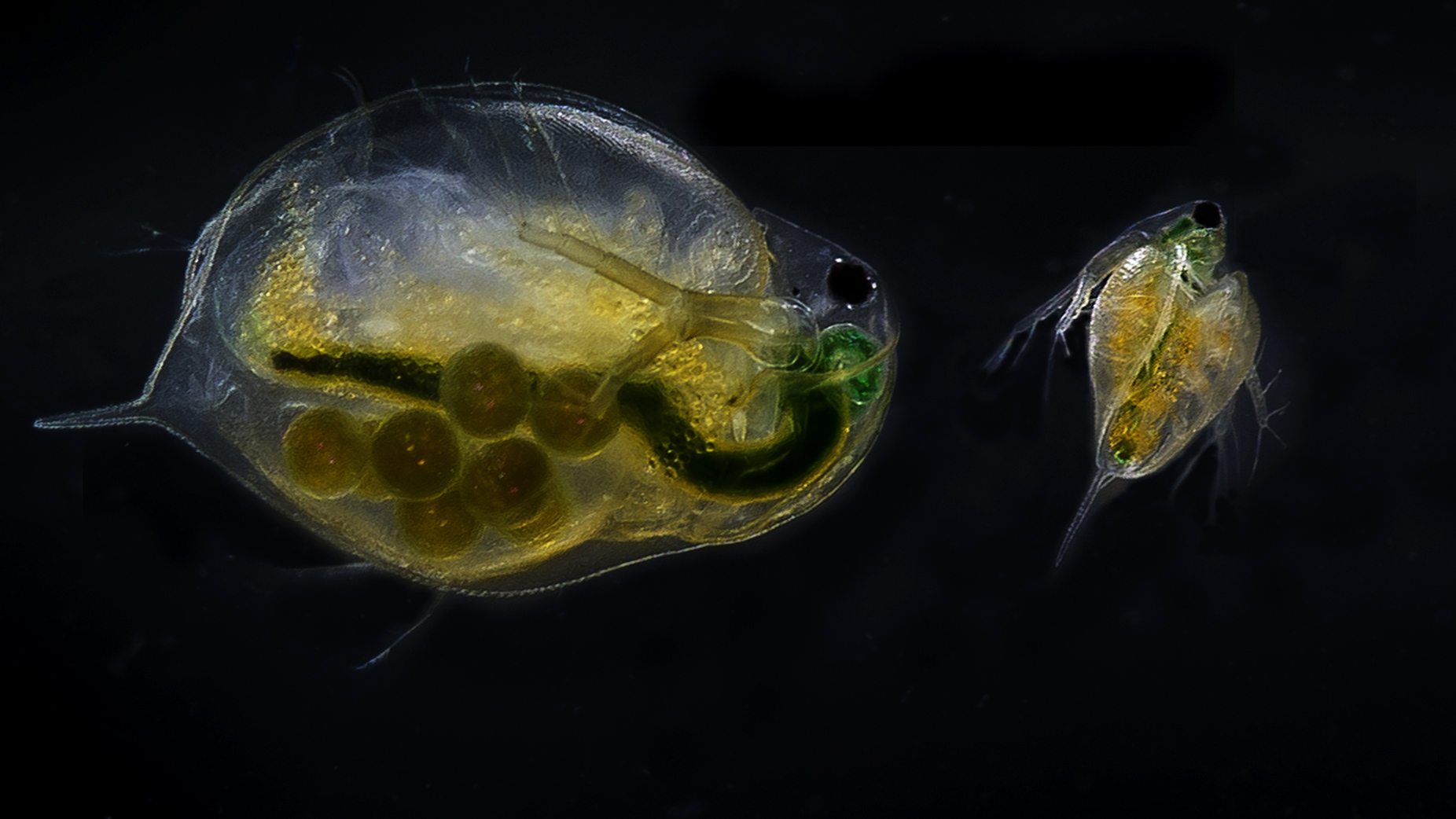 Empirical studies on effects of environmental change typically focus either on the direct and immediate effects on individual characteristics and corresponding effects on population abundance changes, or on long term evolutionary changes. Yet, it is becoming increasingly clear that these two processes occur simultaneously and may influence each other. For example, an environmental change may cause mean reproductive success to decrease, which in turn may cause the population abundance to decline. At the same time, the environmental change may cause certain individual characteristics to be favored (i.e. having higher fitness) over others previously favored ones, resulting in evolutionary changes. This in turn may cause further change in population abundance. In this project we will use a highly suitable model organism (Daphnia), which is representative for a wide range of key species in freshwater and marine food webs, and focus on one easily controlled environmental factor (temperature). We will study some target traits which may have effects on fitness that depend on both temperature and population density, and determine their potential for evolutionary changes. We will then quantify how variation in temperature- and density-responses in these traits influences fitness across thermal regimes and population densities. The results obtained are expected to yield novel understanding of links between evolutionary and ecological responses to environmental change in general, and more specifically for temperature changes.
Empirical studies on effects of environmental change typically focus either on the direct and immediate effects on individual characteristics and corresponding effects on population abundance changes, or on long term evolutionary changes. Yet, it is becoming increasingly clear that these two processes occur simultaneously and may influence each other. For example, an environmental change may cause mean reproductive success to decrease, which in turn may cause the population abundance to decline. At the same time, the environmental change may cause certain individual characteristics to be favored (i.e. having higher fitness) over others previously favored ones, resulting in evolutionary changes. This in turn may cause further change in population abundance. In this project we will use a highly suitable model organism (Daphnia), which is representative for a wide range of key species in freshwater and marine food webs, and focus on one easily controlled environmental factor (temperature). We will study some target traits which may have effects on fitness that depend on both temperature and population density, and determine their potential for evolutionary changes. We will then quantify how variation in temperature- and density-responses in these traits influences fitness across thermal regimes and population densities. The results obtained are expected to yield novel understanding of links between evolutionary and ecological responses to environmental change in general, and more specifically for temperature changes.
Read more at How does nature respond to changes in temperature?
Project leader: Professor Sigurd Einum (CBD)
INSYNC: Community dynamics in a rapidly warming high Arctic: trophic synchrony in time and space
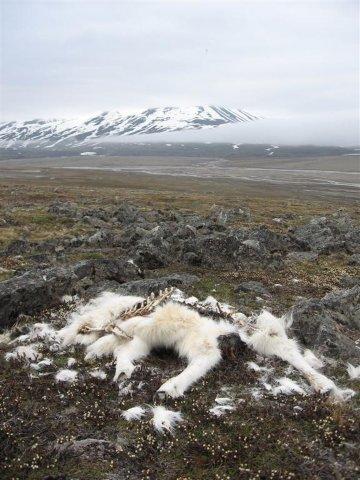 The INSYNC project - financed by the Research Council Norway (FRIPRO) for 2018-21 - aims to explore how patterns of community dynamics in time and space are driven by direct versus indirect effects of climate (change). To achieve this, we will combine stochastic demographic modelling, experimental approaches and analyses of timeseries data across species and trophic levels in the Svalbard tundra ecosystem. Project partners include Univ. Aberdeen (UK), Univ. Groningen (NL), CNRS Montpellier (FR), Univ. Iceland, Norwegian Meteorological Institute, and Univ. Centre Svalbard (UNIS).
The INSYNC project - financed by the Research Council Norway (FRIPRO) for 2018-21 - aims to explore how patterns of community dynamics in time and space are driven by direct versus indirect effects of climate (change). To achieve this, we will combine stochastic demographic modelling, experimental approaches and analyses of timeseries data across species and trophic levels in the Svalbard tundra ecosystem. Project partners include Univ. Aberdeen (UK), Univ. Groningen (NL), CNRS Montpellier (FR), Univ. Iceland, Norwegian Meteorological Institute, and Univ. Centre Svalbard (UNIS).
Project leader: Dr. Brage B. Hansen (CBD)
---
Quantitative criteria for the ecological risk assessment of alien species
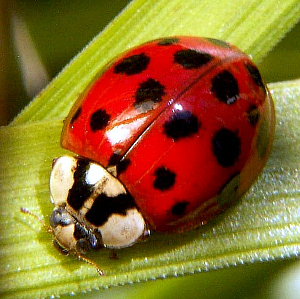 While most alien species are harmless, some are highly detrimental to native biota. We have developed a quantitative set of criteria that assesses the risk posed by alien species along two axes: one quantifies the invasion potential (establishment and spread rates); the other measures ecological effects on native biota on the species and landscape level. The criteria have been used by the Norwegian Biodiversity Information Centre to assess all 2300 alien species known to occur in Norway and to assemble a Black List. We are currently working on models to quantify spread of alien species in order to improve on the assessment of invasion potential.
While most alien species are harmless, some are highly detrimental to native biota. We have developed a quantitative set of criteria that assesses the risk posed by alien species along two axes: one quantifies the invasion potential (establishment and spread rates); the other measures ecological effects on native biota on the species and landscape level. The criteria have been used by the Norwegian Biodiversity Information Centre to assess all 2300 alien species known to occur in Norway and to assemble a Black List. We are currently working on models to quantify spread of alien species in order to improve on the assessment of invasion potential.
Project leader: dr. Hanno Sandvik (CBD)
---
Stochastic population biology in a fluctuating environment
The aim of this project is to produce a new synthesis integrating ecological and evolutionary processes. This synthetic approach is based on the fundamental premise that the effects of environmental stochasticity are essential for the understanding of biological processes at every time scale because all natural populations are exposed to a fluctuating environment. The project addresses three questions. First, it will examine whether the ecological effects of a fluctuating environment can be predicted from some basic set of characters distributing species along a slow-fast continuum of life history variation. Second, by using long-term study systems run by CCB, partition selection on fitness-related traits into different hierarchical components, which all must be estimated for predicting the rate of evolutionary changes in quantitative characters. Third, examine to what extent using a comparative approach how the strength of fluctuating selection caused by environmental change is predictable from basic life history characteristics. Any emerging patterns arising from the evaluation of these hypotheses is expected to represent a major break-thr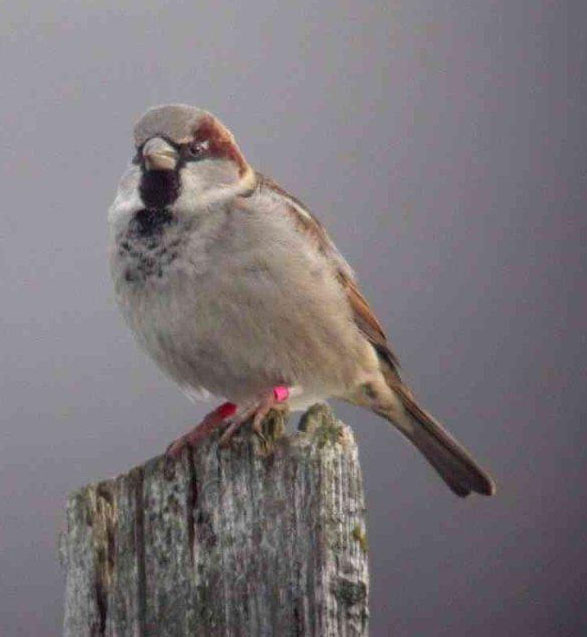 ough in evolutionary biology because it will enable identification of general principles and processes that affect the rate of change of populations both at ecological and evolutionary time scales and hence provide tools for development of quantitative predictions for the expected rate of Darwinian evolution in fluctuating environments. The knowledge advanced will have significant implications for research in population biology and its future application in applied conservation biology.
ough in evolutionary biology because it will enable identification of general principles and processes that affect the rate of change of populations both at ecological and evolutionary time scales and hence provide tools for development of quantitative predictions for the expected rate of Darwinian evolution in fluctuating environments. The knowledge advanced will have significant implications for research in population biology and its future application in applied conservation biology.
Project leader: Prof. Bernt-Erik Sæther (CBD)
---
Evolutionary processes in age-structured moose populations: towards sustainable management strategies in fluctuating environments
In this project we will quantitatively examine how choice of harvest strategies will affect the genetic composition and evolutionary processes of Norwegian moose. We will achieve this by parameterizing stochastic age-structured models to predict evolutionary responses to harvest-induced selection from a combination of a carefully studied model-system and long-term time series. These analyses will be used to perform sensitivity analyses to identify how expected changes in critical parameters are likely to affect the genetic drift and selective processes on quantitative characters. Based on these results we will derive harvest strategies that include maintain evolutionary processes ensuring sustainable resource utilisation in a changing environment.
Project leader: Prof. Bernt-Erik Sæther (CBD).
---
Spatial ecology and habitat use of an invasive alien species - the raccoon dog in Scandinavia
The raccoon dog Nyctereutes procyonoides is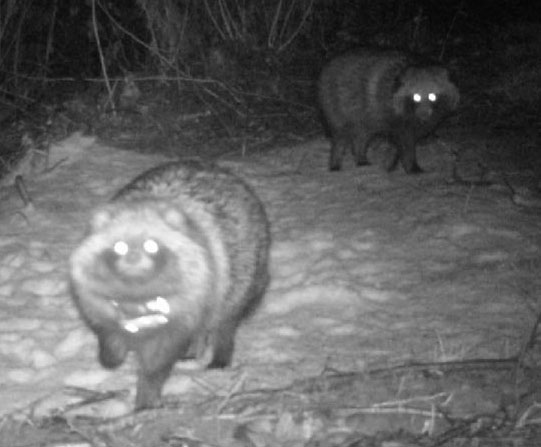 an alien carnivore species in Scandinavia. Native to eastern Asia, it was introduced in 1929 in the former Soviet Union and since then has spread and established itself in several European countries. In Norway, there have been several reliable observations of this species. However, the species is well established in Finland and ongoing reproduction has been recorded in Sweden. The project wil analyse data gathered in Sweden ("The Swedish raccoon dog research project") from adult dispersing raccoon dogs fit with GPS collars. The results will provide information about suitable habitat for raccoon dog during dispersal and settlement, which is important knowledge for an effective management aiming to stop the invasion of a potential harmful species for Scandinavian nature.
an alien carnivore species in Scandinavia. Native to eastern Asia, it was introduced in 1929 in the former Soviet Union and since then has spread and established itself in several European countries. In Norway, there have been several reliable observations of this species. However, the species is well established in Finland and ongoing reproduction has been recorded in Sweden. The project wil analyse data gathered in Sweden ("The Swedish raccoon dog research project") from adult dispersing raccoon dogs fit with GPS collars. The results will provide information about suitable habitat for raccoon dog during dispersal and settlement, which is important knowledge for an effective management aiming to stop the invasion of a potential harmful species for Scandinavian nature.
Project leaders: dr. Claudia Melis and dr. Ivar Herfindal (both at CBD)
---
Genomics of adaptation to environmental change in two wild bird populations
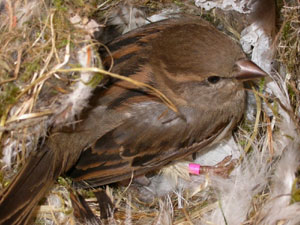 Understanding how and by which mechanisms populations adapt to the environment they occupy is a fundamental goal in evolutionary biology. However, gaining insight into these processes is difficult without knowledge of the molecular genetic variants responsible for traits involved in adaptive processes. The primary goal of this proposal is to improve our mechanistic understanding (i.e. on the gene level) of how microevolution allows populations to adapt to changes in the environment. The secondary goal of this project is to examine the extent of and genetic basis of plasticity in key life history traits such as clutch size and number of broods in an avian metapopulation. To meet these goals we will use novel genetic resources (high density SNP chips) combined with an association mapping approach to detect "adaptation genes" in important avian fitness related traits like timing of breeding, clutch size and number of broods and plasticity in these traits.
Understanding how and by which mechanisms populations adapt to the environment they occupy is a fundamental goal in evolutionary biology. However, gaining insight into these processes is difficult without knowledge of the molecular genetic variants responsible for traits involved in adaptive processes. The primary goal of this proposal is to improve our mechanistic understanding (i.e. on the gene level) of how microevolution allows populations to adapt to changes in the environment. The secondary goal of this project is to examine the extent of and genetic basis of plasticity in key life history traits such as clutch size and number of broods in an avian metapopulation. To meet these goals we will use novel genetic resources (high density SNP chips) combined with an association mapping approach to detect "adaptation genes" in important avian fitness related traits like timing of breeding, clutch size and number of broods and plasticity in these traits.
Project leader: dr. Arild Husby (CBD)
---
The genetic basis of response to selection in natural bird populations - insight from state-of-the-art genomics analyses
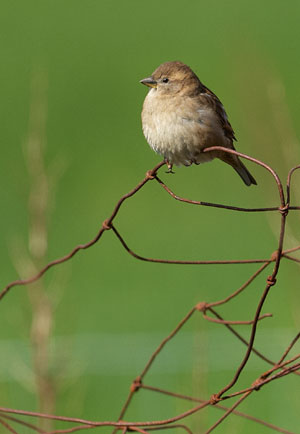 To persist, populations of organisms need to be able to adapt to changing environmental conditions. Although short term evolution has been observed to occur, the genetic mechanisms constraining and promoting evolutionary changes of complex traits are little understood, in particular in natural populations. The current project will focus on the genetic basis for adaptive evolution of complex traits, and hence contribute to the advancement of our understanding of the evolutionary process, which is a cornerstone in biology. We will achieve this by innovative and multi-disciplinary research in the international forefront of the fields of evolutionary biology and statistics using and developing state-of-the-art functional genomics tools. Unique empirical data will be obtained from artificial selection experiments carried out in two natural bird populations. One unselected natural population will be used as control.
To persist, populations of organisms need to be able to adapt to changing environmental conditions. Although short term evolution has been observed to occur, the genetic mechanisms constraining and promoting evolutionary changes of complex traits are little understood, in particular in natural populations. The current project will focus on the genetic basis for adaptive evolution of complex traits, and hence contribute to the advancement of our understanding of the evolutionary process, which is a cornerstone in biology. We will achieve this by innovative and multi-disciplinary research in the international forefront of the fields of evolutionary biology and statistics using and developing state-of-the-art functional genomics tools. Unique empirical data will be obtained from artificial selection experiments carried out in two natural bird populations. One unselected natural population will be used as control.
Project leader: dr. Henrik Jensen (CBD).
---
Intensified harvesting of forests – implications for enterprises related to wild and domestic ungulates
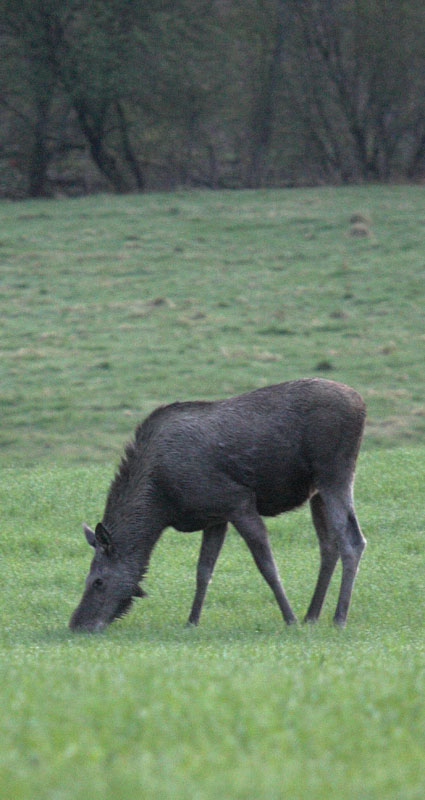 Through an interdisciplinary approach, we will examine the implications of intensified harvesting of forests on enterprises related to wild and domestic ungulates, which are of substantial ecological, economic and cultural importance, but hitherto overlooked in the rapidly expanding focus on bioenergy. We will achieve this through three subgoals:
Through an interdisciplinary approach, we will examine the implications of intensified harvesting of forests on enterprises related to wild and domestic ungulates, which are of substantial ecological, economic and cultural importance, but hitherto overlooked in the rapidly expanding focus on bioenergy. We will achieve this through three subgoals:
1. Quantify effects of intensified logging activity (including altered silviculture) on abundance and nutritional contents of forage plants for ungulates in the boreal forest.
2. Describe diet and habitat use by economically important forest-dwelling ungulates (moose, sheep, cattle) along ecogrographical gradients in varying forest landscapes, as well as damage levels from browsing and trampling on commercially valuable tree species.
3. Develop bioeconomic model tools that integrate economic and ecological factors to determine optimal use of the forest as a collective resource for enterprises related to wild or domestic ungulates and various forestry regimes (e.g., logging for timber or energy purposes).
Project leader: dr. Hilde K. Wam (Bioforsk), core member: dr. Ivar Herfindal (CBD).
---
Causes and consequences of fluctuating selection in a stochastic environment
In this project we will quantitatively examine the contribution of fluctuating selection at different ages and random drift to evolutionary changes of quantitative characters in house sparrows. We will achieve this by parameterizing stochastic age-specific selection models to predict the effects of fluctuating environments on the distribution of phenotypic characters both in time and space in a house sparrow metapopulation and by evaluating how the strength of selection is affected by experimental evaluations of the distribution of phenotypes. Based on these results we will provide a mechanistic understanding for how fluctuations in the environment can produce long-term changes in fitness-related quantitative traits.
Project leader: Prof. Bernt-Erik Sæther (CBD).

---
